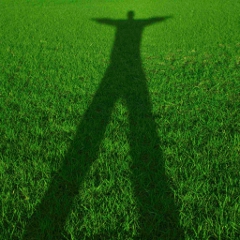A magazine where the digital world meets the real world.
On the web
- Home
- Browse by date
- Browse by topic
- Enter the maze
- Follow our blog
- Follow us on Twitter
- Resources for teachers
- Subscribe
In print
What is cs4fn?
- About us
- Contact us
- Partners
- Privacy and cookies
- Copyright and contributions
- Links to other fun sites
- Complete our questionnaire, give us feedback
Search:
Sensational - the try 'em at home guide to illusions
The floating arms illusion

Adaptation also happens in your muscles, and can cause some strange effects. Stand in a doorway and press the back of each hand hard against the doorframe for a minute or so. Then walk forward. Your arms will feel like they want to float up. In fact they might actually do it. The reason is that all the muscles in your body work in pairs. These are called antagonistic pairs and they are needed as muscle fibre can only contract. You need one muscle on one side of a joint to pull the bone one way and another muscle on the other side to pull it back in the opposite direction. When you stand in the doorframe and push you fatigue one of the sets of muscles. The muscle adapts to being under pressure. When you walk forward the antagonistic muscle is ready to go. It hasn't had to adapt. The two sets are now out of balance so the antagonistic muscle starts to contract and up go your arms. Understanding how the muscles in the body work so cleverly together gives robot builders some clever engineering models to hep them build walking machines.


